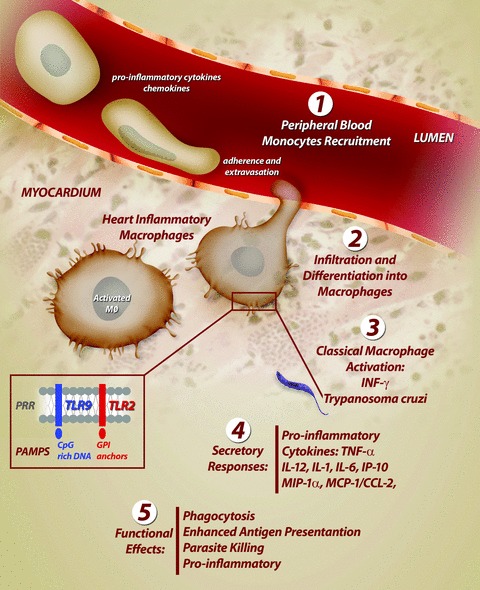5.

Activation of heart inflammatory macrophages during the acute infection with Trypanosoma cruzi. In response to acute infection, a cascade of events recruit cells derived from monocytic lineage from the peripheral blood into heart. This cascade culminates in a strong activation of macrophages. Classical activation of macrophages involves the key cytokine interferon gamma (INF-γ) and T. cruzi components (GPI anchors and CpG-rich DNA). These parasite products are recognized at the macrophage surface by Toll-like receptors (TLRs), a class of pattern recognition receptors (PRRs), which initiate an immune response and directly activate macrophages. Activated macrophages kill the parasite through various effector mechanisms such as TNF-α production. PAMPS, pathogen-associated molecular patterns; GPI, glycosylphosphatidylinositol; TNF-α, tumour necrosis factor-alpha; MIP-1α, macrophage inflammatory protein1α; MCP-1/CCL-2, monocyte chemoattractant protein-1; IP-10, inducible protein 10.
